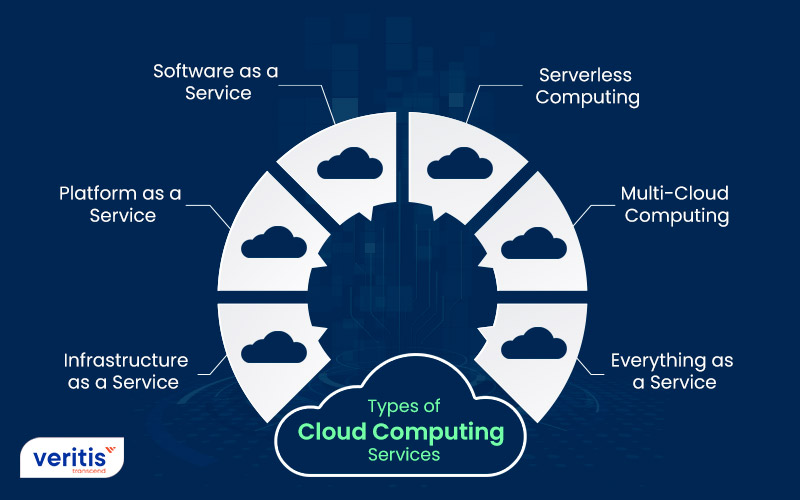Vital Tips for LinkDaddy Cloud Services: Optimizing Your Universal Cloud Service Strategy
Wiki Article
Simplify Your Framework With Cloud Solutions
As organizations browse the ever-evolving landscape of modern technology and data management, the function of cloud solutions in simplifying facilities has actually come to be progressively popular. The attraction of structured procedures, boosted performance, and enhanced source allotment through cloud services is indisputable. Nonetheless, the trip towards a much more affordable and active IT facilities entails greater than just migrating to the cloud. It requires a calculated method and a deep understanding of the subtleties of cloud adoption. How can businesses successfully navigate this shift and absolutely unlock the potential of cloud solutions for streamlining their infrastructure?Benefits of Cloud Solutions
Cloud solutions offer a streamlined strategy to handling IT framework, giving companies with scalability, versatility, and cost-efficiency. One of the essential benefits of cloud solutions is the scalability they supply. Businesses can quickly scale their resources up or down based on need, ensuring they only pay for what they make use of. This flexibility is especially useful for companies with rising and fall requirements or those experiencing growth.Furthermore, cloud services remove the demand for organizations to spend in costly equipment and software. This cost-efficiency is a substantial advantage, specifically for little to medium-sized enterprises looking to decrease in advance costs. By using cloud solutions, companies can access top notch IT sources without the large rate tag related to standard facilities configurations.
Moreover, cloud solutions offer organizations with the adaptability to access their data and applications from anywhere with a web link. This degree of ease of access boosts collaboration among teams, enables remote job, and increases overall efficiency. The versatility offered by cloud services encourages services to adapt swiftly to transforming market problems and consumer needs.
Expense Savings and Scalability
Along with the operational advantages highlighted earlier, the combination of cloud services into a firm's framework generates considerable expense financial savings and enhanced scalability. Cloud services provide a pay-as-you-go version, enabling companies to scale sources up or down based on current needs, thus staying clear of the prices linked with keeping excess ability. This flexibility enables companies to adjust swiftly to rising and fall needs without sustaining unneeded expenditures.In addition, cloud solutions remove the requirement for in advance financial investments in equipment and software program, lowering capital investment. Overhead are also minimized as companies no more need to take care of and preserve physical servers, bring about reduced energy consumption and IT staffing expenses. Furthermore, cloud services provide automated updates and maintenance, making certain that the framework stays safe and secure and up-to-date without calling for manual treatments.
Enhanced Security Procedures
Carrying out rigorous protection actions is vital when incorporating cloud services into a company's infrastructure to guard sensitive information and make certain compliance with industry guidelines. Cloud solution carriers supply boosted safety features such as information file encryption, firewall software defense, and multi-factor verification to reduce cybersecurity risks.Moreover, normal safety audits and conformity analyses help identify susceptabilities and make certain adherence to sector requirements. Business can additionally benefit from features like automatic safety updates and real-time risk monitoring supplied by cloud provider. By focusing on protection actions and remaining positive in dealing with possible dangers, organizations can with confidence take advantage of cloud services while shielding their useful data from unauthorized access or violations.
Transitioning to Cloud Facilities
To efficiently integrate cloud solutions right into a company's framework, a structured strategy that resolves the change in the direction of cloud-based services is necessary. Transitioning to shadow framework includes mindful planning and execution to make sure a smooth movement process. The primary step is to examine the present framework and identify which applications and systems are suitable Visit This Link for migration to the cloud. This evaluation ought to think about aspects such as information sensitivity, compliance requirements, and efficiency requirements.Once the analysis is complete, a movement strategy ought to be established. This technique ought to outline the timeline, resources, and responsibilities for moving each part to the cloud. It is important to interact this plan clearly to all stakeholders to guarantee alignment and decrease disruptions throughout the change.
Throughout the movement testing, monitoring and procedure are vital to recognize and attend to any kind of concerns immediately. Normal checkpoints must be established to track progression and make essential modifications. Furthermore, training for employees on making use of cloud services must be supplied to guarantee an effective shift and take full advantage of the advantages of the brand-new facilities.
Ideal Practices for Cloud Adoption
Successful fostering of cloud services depends upon the tactical positioning of business goals with technical abilities and business preparedness. To ensure a smooth shift to the cloud, companies ought to start by carrying out a comprehensive analysis of their current facilities and identifying which work go to this site are best matched for cloud migration. It is crucial to entail essential stakeholders from various divisions in the decision-making procedure to get buy-in and deal with any kind of concerns early.Another ideal technique for cloud adoption is to focus on security and compliance. Organizations has to very carefully review the safety and security procedures supplied by cloud solution suppliers and guarantee that their information is shielded according to sector standards and regulative needs. Implementing robust data security, access controls, and routine safety audits can assist alleviate risks connected with cloud adoption.

Conclusion

As services navigate the ever-evolving landscape of modern technology and data administration, the duty of cloud services in simplifying facilities has actually come to be significantly famous - cloud services press release. Just how can businesses efficiently navigate this change and really unlock the potential of cloud services for simplifying their facilities?
Cloud solutions provide a structured technique to handling IT framework, providing companies with cost-efficiency, flexibility, and scalability. By utilizing cloud solutions, services can access top quality IT resources without the significant rate tag linked with conventional facilities configurations.
To make sure a smooth change to the cloud, companies must begin by carrying out a thorough assessment of their existing facilities and identifying which workloads are best fit for cloud movement.
Report this wiki page